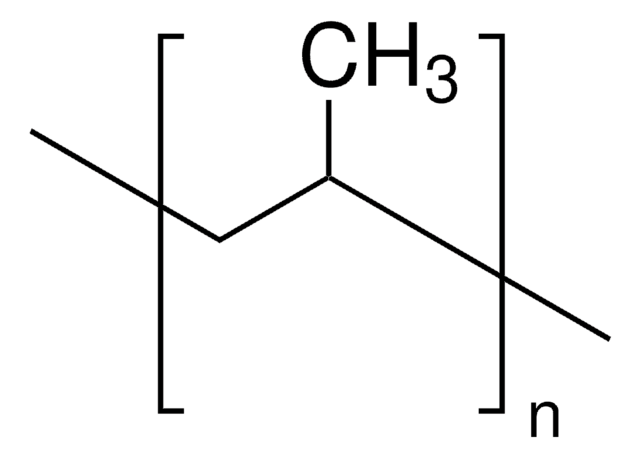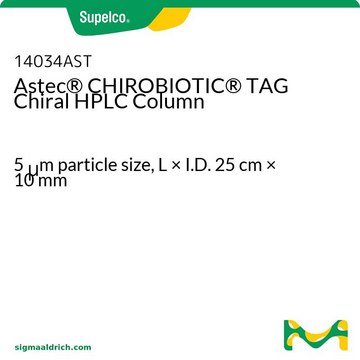53023AST
Astec® CLC-D Chiral (5 μm) HPLC Columns
L × I.D. 15 cm × 4.6 mm, HPLC Column
Synonym(s):
Chiral Separation CLC-D Column
About This Item
Recommended Products
product name
Astec® CLC-D Chiral HPLC Column, 5 μm particle size, L × I.D. 15 cm × 4.6 mm
material
stainless steel column
agency
suitable for USP L32
product line
Astec®
packaging
pkg of 1 ea
manufacturer/tradename
Astec®
parameter
0-50 °C temperature
172 bar pressure (2500 psi)
technique(s)
HPLC: suitable
L × I.D.
15 cm × 4.6 mm
matrix
fully porous particle
matrix active group
chiral bidentate ligand (D-form), requires 5 mM CuSO4 phase
particle size
5 μm
pore size
100 Å
operating pH
3.5-7
separation technique
chiral
General description
Features:
- Separates α-hydroxy carboxylic acids, amino acids and other α-bifunctional compounds
- High selectivity with simple mobile phases
- Copper complex gives strong UV 254 nm signal
- Simple reversal of elution order, CLC-L vs. CLC-D
- Excellent reproducibility
(1) Davankov, V. A.; Rogozhin, S. V. Ligand chromatography as a novel method for the investigation of mixed complexes: Stereoselective effects in a-amino acid copper(II) complexes. J. Chrom. A. 1971, 60, 284-312.
Legal Information
Choose from one of the most recent versions:
Already Own This Product?
Find documentation for the products that you have recently purchased in the Document Library.
Protocols
Separation of DL-Tartaric acid, ≥99%
Related Content
Astec CLC Copper Ligand Exchange Chiral HPLC Columns. The Astec CLC phases are based on coupling an enantiomeric form of an amine to a proprietary Astec derivative to create an appropriate distance for copper coupling.
Chromatograms
application for HPLCapplication for HPLCOur team of scientists has experience in all areas of research including Life Science, Material Science, Chemical Synthesis, Chromatography, Analytical and many others.
Contact Technical Service






